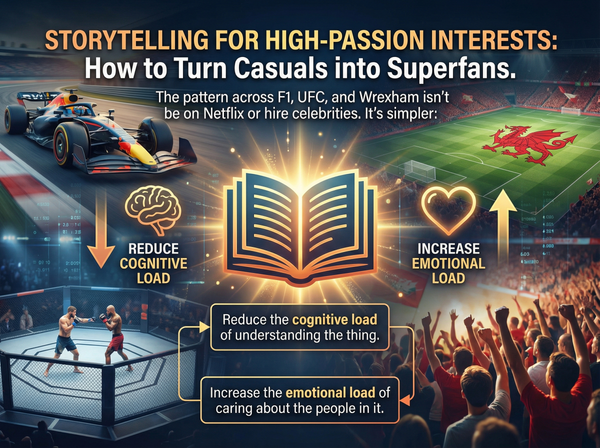Stop Losing Sales: The Email Flows Every E-commerce Brand Needs
An e-commerce email marketing flow, also known as a drip campaign, is a pre-written series of emails automatically sent to a specific audience segment based on a predetermined trigger. These flows are crucial for converting site traffic into paying customers and retaining them long-term.
Many brands spend thousands of dollars on paid ads to drive traffic, only for visitors to leave without making a purchase. A more effective approach is to use pop-up forms to convert a portion of this traffic into email subscribers. While most forms convert only 2–3% of visitors, the ideal target is to convert 6–12%.
The ultimate goal is to turn this list into revenue, with an ideal target of 25-40% of sales coming from email.
The Foundation of a Strong Email Program: Strategy and Metrics
Before we dive into the flows, it's essential to understand the strategy and metrics that make them successful. These flows should not exist in a vacuum; they are part of a larger customer lifecycle marketing strategy, designed to acquire, convert, and retain customers.
Key Metrics to Track:
- Open Rate: The percentage of recipients who open your email.
- Click-Through Rate (CTR): The percentage of recipients who click a link within your email.
- Conversion Rate: The percentage of recipients who complete a desired action, like making a purchase, after clicking a link.
- Recovery Rate (for Abandoned Cart/Checkout): The percentage of abandoned carts or checkouts that are ultimately converted into sales.
- Revenue per Recipient (RPR): The total revenue generated by a flow divided by the number of people who entered it. This is the ultimate measure of a flow's profitability.
Best Practices for Maximizing Performance:
- A/B Testing: Test different subject lines, email content, timing, and calls-to-action to find what resonates best with your audience.
- List Segmentation: Segment your audience based on behavior (e.g., viewed a product vs. added to cart) to send highly relevant and personalized emails.
- Personalization: Use dynamic content to include a customer's name, their recently viewed products, or other unique details to make each email feel personal.
Key E-commerce Email Flows
Flows should account for 25–40% of your total email marketing revenue. The majority of this revenue will come from the Welcome, Abandoned Cart, and Abandoned Checkout flows. Let's break down the most essential flows in detail.
1. Welcome Flow
This is the most critical flow you'll create and often has the highest engagement rates.
- Trigger: A new subscriber joins your email list, typically via a pop-up form.
- Purpose: The primary goal is to deliver the promised welcome discount, introduce your brand, and showcase your products. This flow helps build an immediate relationship with a new subscriber.
- Content: A good welcome flow can include 4–12 emails.
- Email 1 (Sent within minutes): Welcome & Discount. Greet the new subscriber, thank them for signing up, and deliver the promised discount code. Tactical Tip: Consider a resend to those who don't open the first email after 24 hours, using a different subject line and preview text to catch their attention.
- Email 2 (24 hours later): Brand Story. Tell your brand's unique story. What problem do you solve? What are your values? This helps build an emotional connection.
- Email 3 (2 days later): Product Showcase. Highlight your bestsellers or new arrivals. Use high-quality imagery and links to product pages.
- Email 4 (3-4 days later): Social Proof. Remind them of the coupon and include a strong testimonial or customer review. This builds trust.
- Email 5 (5-6 days later): Us vs. Them. This email highlights what makes your brand stand out from competitors. Focus on your unique value proposition.
- Email 6 (7 days later): Testimonials. Dedicate an entire email to customer testimonials, user-generated content, or press mentions to provide further social proof.
- Email 7 & 8 (8-9 days later): Last Chance. Create a sense of urgency with Last Chance! emails to encourage them to use their discount before it expires.
- Filters: To ensure they only receive the flow once, set the filter to Make a purchase 0 times since starting this flow. This prevents them from receiving the welcome series after they've already converted.
2. Site Abandonment Flow
This flow is designed to capture the interest of visitors who didn't add anything to their cart.
- Trigger: Somebody is active on your site for a set period (e.g., 30-60 seconds) but leaves without viewing a specific product page.
- Purpose: Bring visitors who haven't shown high-intent signals (like viewing a product) further down the sales funnel. This flow offers a helping hand and provides a list of popular products to pique their interest.
- Filters: Ensure the user has not viewed a product, added an item to their cart, gone to checkout, or made a purchase since the flow started. Also, set a cool-down period of 30 days to prevent them from getting overwhelmed with too many emails if they visit your site frequently.
3. Browse Abandonment Flow
This flow targets a more specific audience than the site abandonment flow.
- Trigger: A person views a specific product but doesn't add it to their cart.
- Purpose: Remind them of the product they viewed, pique their interest with a personalized touch, and provide social proof related to that product.
- Content: This flow can be 3–8 emails.
- Email 1 (Sent within an hour): A gentle nudge with an image of the product they viewed. Subject Line Tip: Something personalized like, Still thinking about the [Product Name]?
- Email 2 (1-2 days later): Follow-up emails can include testimonials or reviews specifically for that product.
- Email 3 (3-4 days later): Subsequent emails can be split based on the product viewed to offer more specific information, like sizing guides or unique features.
- Email 4 (5-6 days later): The flow can conclude with a Risk Reversals + Urgency email to address any final hesitations (e.g., free returns, customer service contact) and encourage a purchase.
4. Cart & Checkout Abandonment Flow
These are two of the most profitable flows you can set up.
- Trigger:
- Cart Abandon: A user adds a product to their cart but doesn't begin the checkout process.
- Checkout Abandon: A user begins the checkout process by entering their email but doesn't complete the purchase.
- Purpose: Re-engage users who showed high intent but didn't complete their purchase. This flow is a powerful tool for recovering otherwise lost sales.
- Content: This flow typically includes 3–8 emails.
- Email 1 (Sent within 1-2 hours): The first email should be a simple reminder of the items they left behind.
- Email 2 (1 day later): Subsequent emails can offer a small discount or highlight customer reviews to overcome any final hesitations.
- Email 3 (2-3 days later): The final email should create a strong sense of urgency, reminding them that the items are still waiting for them.
- Filters:
- Cart Flow: Ensure the user has not started checkout or placed an order.
- Checkout Flow: Ensure the user has not placed an order.
- Tactical Tip: Send the first checkout abandonment email much faster than a cart abandonment email, as the user has already shown higher intent.
5. Post-Purchase Flow
This flow focuses on customer retention and building loyalty.
- Trigger: A person places an order.
- Purpose: Thank the customer, collect reviews, and get them excited about their purchase to help with buyer's remorse.
- Content: This flow can include four or more emails.
- Email 1 (Sent immediately): Thank You. A simple but impactful thank you email. This can be split based on the number of purchases the customer has made (first-time vs. repeat buyer) to make it more personal.
- Email 2 (1-2 days later): Getting Excited?. A pre-delivery email with a tracking number and a link to their order. This builds excitement.
- Email 3 (1 day after delivery): Product Tips. An email providing tips or instructions for using the product. This adds value and enhances their experience.
- Email 4 (5-7 days after delivery): Review Request. A follow-up email asking for a review of the product and their overall shopping experience.
6. Win-back Flow
This flow is all about increasing customer lifetime value (LTV).
- Trigger: A person has not placed an order in a predetermined amount of time (e.g., 60–90 days).
- Purpose: Re-engage lapsed customers and encourage a repeat purchase.
- Content: Send 3–10 re-engagement emails.
- Email 1: A We miss you message.
- Email 2: Ask if they're still interested, provide a recap of new products or updates, and then offer an exclusive discount to encourage them to return.
- Email 3: Conclude with a last chance reminder for the discount.
7. Sunset Flow
This flow is crucial for maintaining a healthy email list and improving deliverability.
- Trigger: A user hasn't engaged with your emails (opened or clicked) in a set period, such as 120 days.
- Purpose: Improve deliverability by removing unengaged profiles from your main list.
- Content: This is a short, one-email flow that asks the user to re-engage or risk being removed from the list. This helps keep your list clean and ensures your emails reach engaged subscribers.
8. VIP Flow
This flow recognizes and rewards your most loyal customers.
- Trigger: A customer has placed a certain number of orders over time (e.g., 5 orders).
- Purpose: Welcome them to your VIP program and reward their loyalty with exclusive offers, early access to sales, and special perks.
- Content: This flow can include three or more emails.
- Email 1: Welcomes them to the VIP program and explains the benefits.
- Email 2: Provides exclusive discounts or early access to new products.
- Email 3: Concludes with an email reminding them of the benefits and encouraging them to take advantage of their exclusive status.
Keep Crushing!
- Sales Guy


